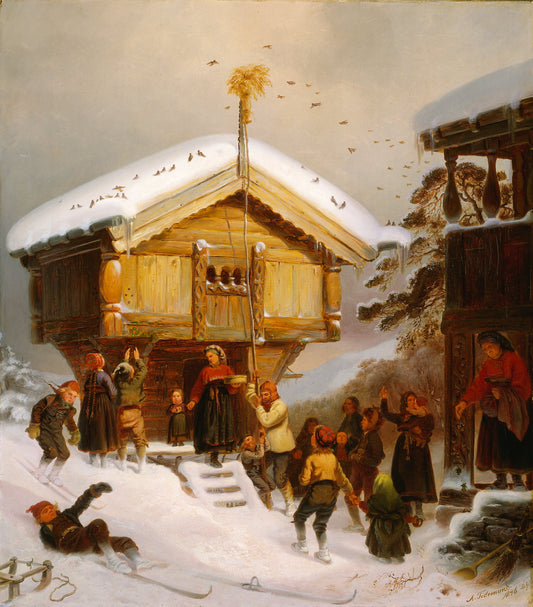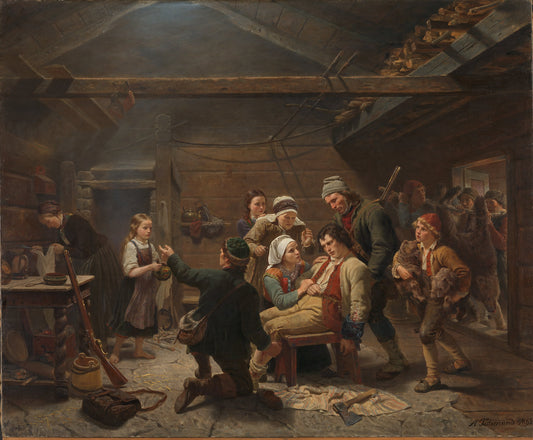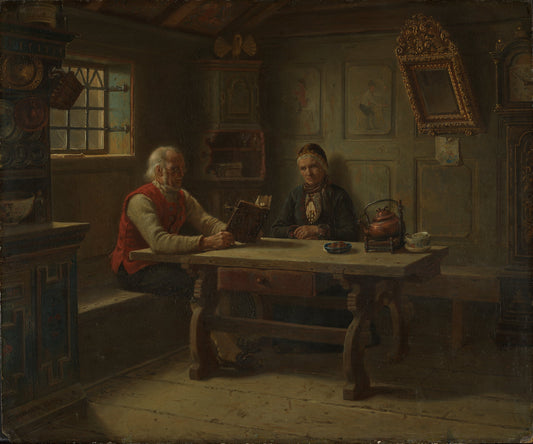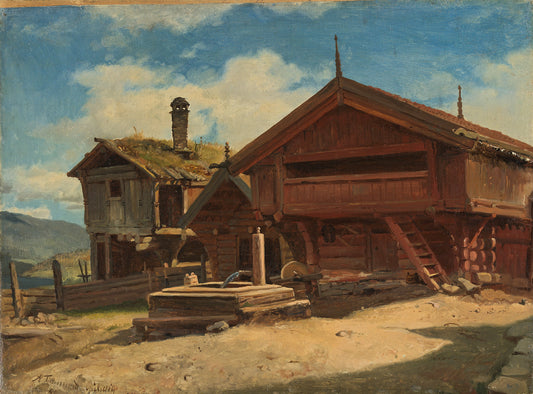Adolph Tidemand
House devotion
House devotion
Couldn't load pickup availability
Museum quality art reproduction – with authentic colours and razor-sharp details, just like the original. Posters : 180g Epson Presentation Matte photo paper, with white border and discreet logo. Artprints : 260g Museum Natural Rag – 100% cotton – timeless museum finish, credit at bottom left, no logo. Produced to order in our own print lab – exclusively for the National Museum .
About the original:
A whole life story is hidden in this small section from a corner of the living room. The ancients seem to have lived a long life in harmony with each other and with their god. Now they can face old age with peace of mind and peace of mind. Adolph Tidemand has here portrayed an everyday, yet morally high-value and exemplary situation, almost like a small devotional picture in itself. Around the middle of the 19th century, urging the viewer to spiritual reflection was considered one of the highest purposes of visual art. The originality of Tidemand's art was that it was the simple Norwegian peasant culture that was portrayed as exemplary.
Tidemand had completed many study trips in order to be able to describe the Norwegian people and Norwegian culture. The models in the painting are the sheriff's widow Anna Gulsvig and the deputy Rasmus Johnsen Kårmoviken, who has borrowed the clothes from her late husband for the picture. The interior is taken from Gulsvikstua from Flå in Hallingdal, while the objects and some details from the room have been assembled from some of Tidemand's other studies. The artist had already used the motif in the picture cycle about the Norwegian farmer's life at Oscarshall amusement park. Tidemand repeated the motif a total of nine times. This picture was commissioned directly from the artist in 1849 and acquired the same year.
- Text: Mai Britt Guleng. From "Highlights. Art from Antiquity to 1945", The National Museum 2014, ISBN 978-82-8154-084-2
Date: 1849
Other titles: Old Age Solitude (ENG)
Designation:
Painting
Material and technique: Oil on cardboard
Technique: Oil
Material:
Cardboard sheet
Dimensions: 38 x 45.5 cm
Subject: Visual arts
Classification: 532 - Visual arts
Motif: Folklore
Type of motif: Interior
Motif - place: Gulsvik Flå B
Acquisition: Purchased from the artist in 1849
Inventory no.: NG.M.00186
Part of exhibition: Art 3. Works from the collection 1814-1950, 2007 - 2011
Art and non-art in the National Gallery. The clean-up April 1942, 1942
Art audience. The National Museum in the Kunststallen, 2021
Registration level: Single object
Owner and collection: The National Museum of Art, Architecture and Design, Visual Art Collections
Photo: Børre Høstland/Lathion, Jacques
Shipping and returns
Shipping and returns
Shipping: We ship to Scandinavia, EU, USA and several other countries. Please contact us if your country is not listed and we will try to arrange delivery.
Delivery time: 2-5 days within Norway, 7 days in Europe, 14 days globally.
Packaging: Our products are made to order and shipped rolled in environmentally friendly packaging.
Customs Fees: International orders may be subject to customs fees, which are not included in the shipping costs.
Secure Payment: We never store your payment information. See our privacy policy for details.
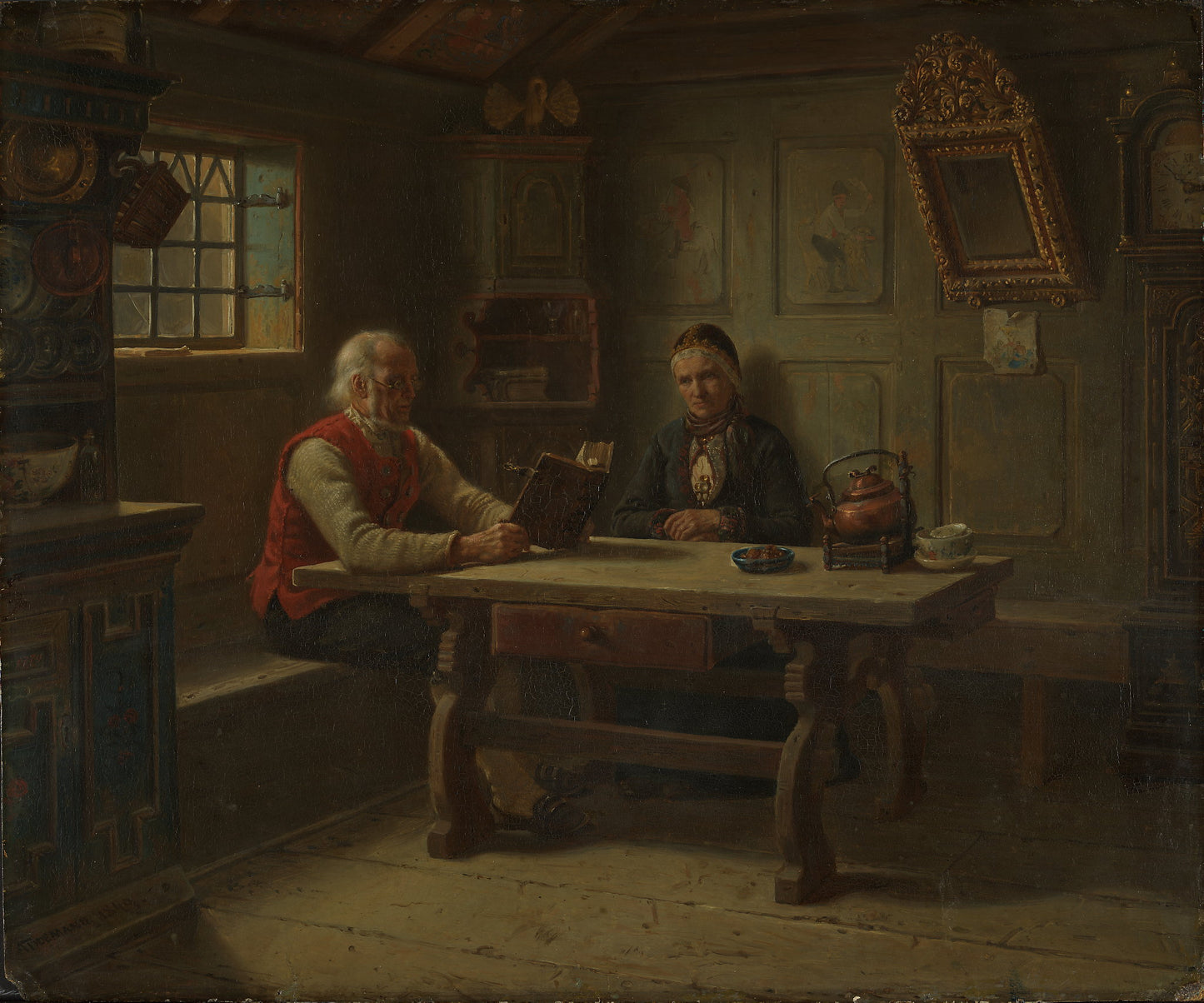
See all works
-
Christmas custom
Vendor:Adolph TidemandRegular price From 150,00 NOKRegular priceUnit price per -
The Bear Hunter's Homecoming
Vendor:Adolph TidemandRegular price From 150,00 NOKRegular priceUnit price per -
House devotion
Vendor:Adolph TidemandRegular price From 150,00 NOKRegular priceUnit price per -
From Gulsvik in Hallingdal
Vendor:Adolph TidemandRegular price From 150,00 NOKRegular priceUnit price per

Adolph Tidemand
Adolph Tidemand was Norway's leading painter of folk life in the 19th century. He made it his life's work to portray the life and customs of the Norwegian farmer. He is a unifying figure in national romanticism, and inspired many of the poets of the time with his images, including Andreas Munch and Bjørnstjerne Bjørnson. The latter half of the 1840s is often regarded as an artistic flourishing time for Tidemand; then he painted major works such as Bridal Wedding in Hardanger (1848, together with Hans Gude), Haugianerne (1848) and De ensomme gamle (1848). These early pictures are characterized by an idealized representation of the Norwegian farmer. Later pictures strike a more dramatic and realistic tone. This applies to pictures such as Tvekamp i et bonde bryllup (1864) and Fanatikerne (1866), both major works from his later production. Tidemand was born in Mandal in 1814. He studied in the years 1832–1837 at the Academy of Fine Arts in Copenhagen, where he was a pupil of Johan Ludvig Lund. In 1837–1841 he studied history painting under Theodor Hildebrandt and Wilhelm Schadow in Düsseldorf. Tidemand's ambition was to become a history painter, and in 1841 he caused a stir with his first historical composition: Gustav Vasa speaking to the dalkarlen in Mora church, a picture from Swedish history. The picture was purchased for the Kunstverein für Rheinland und Westphalia. With a scholarship from home, he traveled via Munich to Rome (1841–1842), where he received decisive impressions particularly from Raphael and Perugino. Here he worked on studies for an altarpiece, Christ blesses the little children, commissioned for Our Savior's Church in Oslo. After returning home in 1842, however, he lost the commission, as he would not bow to Johann Sebastian Welhaven's demand that he perform it in Rome. This dispute took away from him the desire to settle in Norway, and in 1845 he settled in Düsseldorf. Apart from a stay at home in 1848–1849, he remained there for the rest of his life, but with numerous study trips to Norway. The most important had already taken place in 1843, when he visited Gudbrandsdalen, Sogn, Voss and Hardanger. Here, and the following summer in Telemark, he found a farming environment that had still preserved much of its originality, and he came to see it as his life's mission to reproduce it "in clean, polished images". In later works such as Slagsmål i et bonde bryllup (1862–64) and Fanatikerne (1866, Nationalmuseum, Stockholm), the idyll is replaced by a condensed dramatic tension, and a stronger realism is sometimes noticeable, as in Nød (1874, Kristiansand gallery). Less significant are his altarpieces. In his last years he took up history painting again, but his Christian 4 landscape Christiania did not get further than the sketch. It is in the safe and expressive composition that Tidemand has its strength. We find finer painterly values primarily in his numerous sketches and studies, taken from many corners of the country, and also from Värmland and Dalarna. The National Museum/National Gallery owns 117 paintings and studies and a number of drawings by him.



